What is precision air conditioning: classification of devices and the principle of operation of units
Do you think that in server and data centers, as well as in other rooms where a huge number of computers and other equipment that intensively generate heat are concentrated, ordinary household air conditioners can be used to maintain a constant temperature and humidity?
In rooms of this purpose, temperature, humidity and many other parameters should be maintained in a very narrow range, and conventional climate control systems, even the most powerful ones, can not cope with this task. Therefore, the use of precision air conditioners is becoming increasingly important.
What distinctive features does a precision air conditioner have, what is it in general, how does it work, and what types of these devices exist will be discussed in the article.
The content of the article:
Features of precision air conditioners
A precision air conditioner or a stand-alone cabinet-type air conditioner is a device, the use of which allows you to maintain a number of parameters in the room: temperature, relative humidity and air mobility in a narrow range.
Namely:
- range of permissible temperature variability: ± 1 ° С. And individual models of precision air conditioners can further narrow the variability of the value to ± 0.5 ° C);
- the range of variability of the value of humidity + 5%;
- permissible operation of a precision air conditioner at ambient temperature in the range from +50 ° C to -60 ° C.
In this case, the generated heat gain exceeds the values characteristic of the main room by 5–10 times. Accordingly, a very high load is created on air conditioners.
But still, the range of values is maintained.Indeed, in addition to the fact that this type of climate control system is characterized by increased accuracy, a number of requirements regarding reliability are also imposed on the equipment.
Even a minute without air conditioning can be disastrous. And, therefore, material losses.
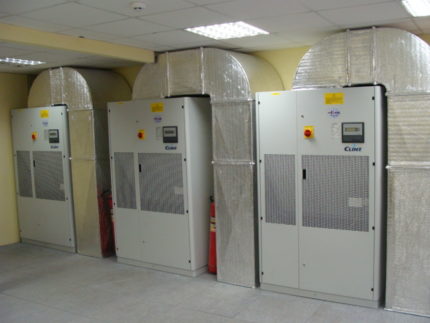
Yes, there is one more requirement that cannot be ignored - precision air conditioners must be able to quickly launch a backup unit when the main one breaks down.
That is, even in the event of a force majeure situation, ensuring the constancy of the temperature and humidity regime will be ensured. And the server-side air conditioning project is usually made taking into account additional capacities.
Benefits of Using Devices
The use of precision systems at various technological facilities is explained by the need to compensate for the significant specific heat surpluses that are released from technological equipment that is sensitive to even the smallest changes in temperature and humidity conditions.
That is, the greater the deviation of the room temperature from the optimal values, the more the operating life of expensive equipment is reduced.
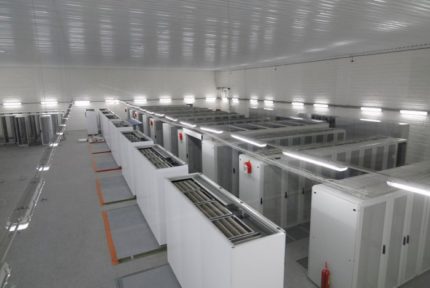
Failure to eliminate the breakdown of the climate control system in a short time may cause the breakdown of equipment that generates significant heat gain.
For example, under the condition of overheating of technological equipment in the automatic telephone exchange hall, as well as with an unacceptable deviation from the optimal value of the relative humidity, the probability of equipment breakdown is quite high.
Precision air conditioners effectively compensate for significant specific heat surpluses and make it possible to maintain the necessary parameters of the temperature and humidity conditions in the room.
Scope of equipment
The use of these devices to ensure trouble-free and trouble-free operation of technological equipment is becoming relevant in the following areas:
- Fixed telephony - PBX stations, as well as hardware facilities.
- Mobile telephony - telecommunication nodes, which refers to switches and gateways.
- Base and remote stations located in buildings or containers.
- Billing centers.
- IT sector - server and hardware rooms, as well as computer rooms and data centers.
Recently, precision air conditioners are also used by pharmaceutical companies - in those rooms where expensive diagnostic equipment is installed. As well as in modern laboratories designated for research with reagents that are especially sensitive to environmental conditions. Or - with colonies of microorganisms.
High-precision, clean production - the industry covers microelectronics, pharmaceuticals and the space industry, it cannot do without precision air conditioners.
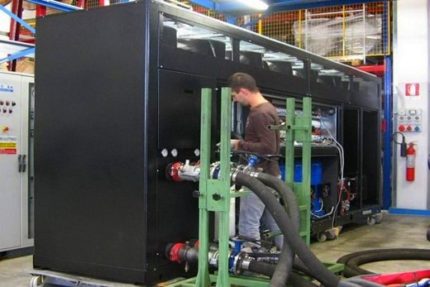
But this is not all - in some museums, libraries and other places of cultural leisure, where especially valuable exhibits are stored, precision air conditioners are also used.
It is clear that more budget models are used there, because there is no need to strictly observe the temperature and humidity conditions, but still.
Precision Air Conditioner
The accuracy and reliability of the unit explains its complex device. Moreover, depending on the model, it may vary.
Mandatory is the presence of:
- The indoor unit is usually a cupboard type.
- Outdoor or outdoor unit.
In the first, preliminary air preparation is carried out immediately before it is fed into the room.
In the second one it can be located: an air condenser or a liquid cooler, if the air conditioner is operated in cold water from a chiller or for a liquid condenser located in the indoor unit.
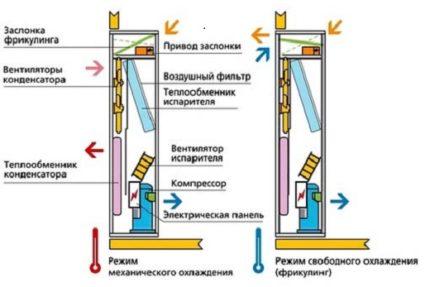
The above diagram is extremely simplified. It displays the principle of work in general terms.
Please note that in addition to all of the above items, the indoor unit of a precision air conditioner includes the following devices:
- compressor;
- evaporator;
- throttle;
- filtration components;
- additional appliances using electricity for heating;
- humidifiers, if necessary;
- air fans;
- valves - both stop and regulating.
The presence of all other elements is determined by the specific model and the requirements for it and the room in which the device will operate. In other words, they are a variable component.
The mechanism of the device
The basic principle of operation of this device can be explained as follows: first, a gaseous refrigerant is compressed in the compressor. Then the refrigerant then enters the condenser. Its condensation takes place there - the process makes it possible to remove heat from the refrigerant.
The next step is the passage of a refrigerant in a liquid state of aggregation through a throttling device. This leads to a decrease in temperature and pressure of the liquid refrigerant.
And already in this state, the refrigerant enters the evaporator. There he goes into a gas state and returns to the compressor.
So, it is the air blown through the evaporator that is taken from the room where it is necessary to maintain temperature and humidity in a narrow range of values.
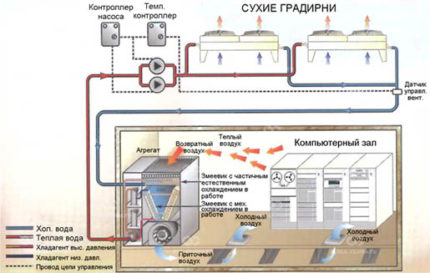
Passing through the evaporator, the air is cooled, and already in this form again enters the room. The operation diagram of the precision air conditioner is shown in the illustrative form above.
Indoor Unit Functions
They are determined by the purpose of a particular model. It is logical to assume that the number of functions determines the scope of the possible application of the unit:
- exclusively cooling;
- cooling and electric heating with the ability to control the temperature;
- cooling and increasing humidity.
The most perfect option is a combination of the cooling function, increasing humidity and electric heating.
It also happens that a certain model is custom-made by the factory, and functions that are not provided for by the original equipment are built into it.
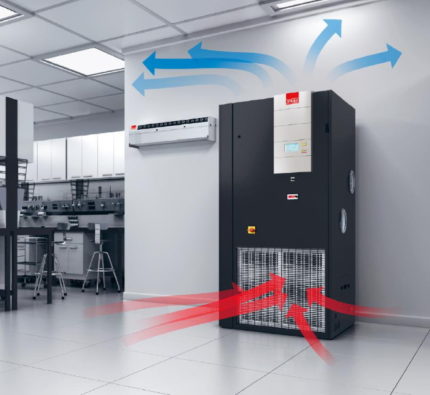
Indoor units may differ in the types of intake and air supply inside the room. For example, the fence can occur in the front part, and the filing in the top. It is carried out through the duct located between the ceilings - false and main.
There are other options:
- The fence occurring in the front part is combined with the supply in the upper part, directly to the room.
- In the upper part, the fence is carried out through an air duct located between the ceilings (false and main). The feed occurs, respectively, from the bottom.
- The fence takes place in the upper part directly from the premises, and submission under the false floor is carried out from the lower part.
- The fence at the back and under the false floor from the lower part takes place, and the supply is carried out in the upper part through the air duct located between the ceilings - false and main.
It also happens that the fence is carried out under a false ceiling from the bottom and behind. Serving takes place directly into the room, in the upper part.

This variability of functions explains the wide possibilities of precision air conditioners.
The structure and mechanism of the selected model can be individually “sharpened” for the characteristics of the room in which it is planned to be used.
Classification of precision air conditioners
Depending on the design of the indoor units, precision air conditioners are classified into the following types:
- Ceiling
- cupboard precision types of air conditioners;
- inter-row.
Depending on the method of cooling the condensers, they are air and liquid. Based on the classification used coolant - water or ethylene glycol.
Each of the above categories has its own characteristics, advantages and disadvantages, which must be taken into account in the process of choosing the control system for the temperature and humidity conditions of the room.
Freon precision air conditioners
Freon monoblocks and precision-controlled climate control systems are provided for telecommunication facilities.
For stationary objects, larger cabinet-type indoor units and inter-row air conditioners are used.
Cabinet air conditioners equipped with a direct boiling evaporator are recognized as the classic and most economical in terms of capital costs for server solutions, they are also freon ones.

Various versions of their execution are possible: with an external condenser with air-type cooling, with an integrated liquid-cooled condenser, as well as equipped with a dry cooling tower.
Inter-row air conditioners with direct evaporation also differ in similar types of condensers (the category is encrypted as DX).
Liquid Precision Devices
Cabinet-mounted precision air conditioners equipped with a liquid heat exchanger are used as closers in the cooling chiller circuit.
In this case, the reliability of operation and the temperature regime of cooling are determined by the adopted basic scheme of the facility’s cooling supply - the scheme includes chillers and pumping groups.
Starting capital costs exceed by 30-40% the costs associated with freon air conditioners. It should be noted that the optimization of the cold supply scheme makes it possible to reduce operating costs.
Precision Freecooling Conditioner
The mechanism of functioning of this type of air conditioner is based on the use of reduced outdoor temperatures.
Free cooling (in English - freecooling) is easily and simply implemented in a cabinet-type freon precision air conditioner with a condenser (liquid) and a dry cooling tower.
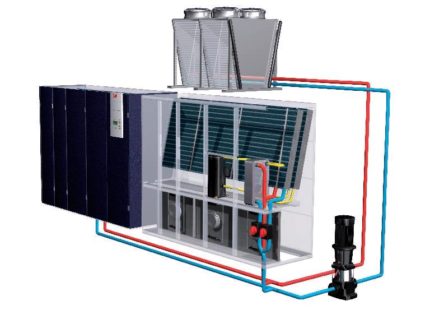
You will need a 2nd heat exchanger (liquid) and ethylene glycol, which fills the circuit of a dry cooling tower.When the ambient temperature drops to the calculated level, cooling will occur due to the functioning of the 2nd circuit - the heat exchanger and the cooling tower.
Despite the increase in initial investments for the purchase of additional equipment, the payback period of these units will be less than 2 years, and a more accurate calculation can be made by knowing the size of local tariffs.
Features of backup systems
Precision air conditioners for the possibility of implementing redundancy of the cooling function are equipped with additional heat exchangers - liquid and freon.
The basic principle of the functioning of this system is not just a banal duplication of cooling systems, but the use of cooling systems with different operating principles.

In other words, units equipped with various cooling sources are combined in one device.
The need for redundancy and its degree is established by regulatory requirements in accordance with the object's fault tolerance class - determined by TIER.
Conclusions and useful video on the topic
On the video - the process of servicing a precision air conditioner by a master with a step-by-step analysis of all the features of the functioning of this device, as well as the requirements for caring for it:
Precision air conditioning allows you to maintain the temperature and humidity in a narrow range of values. This function is important in the rooms where the equipment is located and operates, which is sensitive to the slightest changes in climatic conditions. That is why positional air conditioners are used in server, data centers and high-tech laboratories.
Do you have experience with this technique, questions regarding the installation, selection or installation of precision air conditioners? Having problems with the functioning of precision air conditioners, complaints against manufacturers or service companies? In this case, be sure to share the comment below - you can be sure that your opinion will not be left without attention.

 How the air conditioner works: the principle of the air conditioner, its device and technical scheme
How the air conditioner works: the principle of the air conditioner, its device and technical scheme 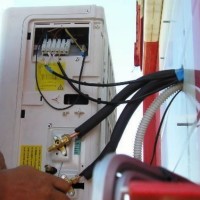 How to connect the air conditioner to the network with your own hands: cable routing + step-by-step instructions for connecting the indoor and outdoor unit
How to connect the air conditioner to the network with your own hands: cable routing + step-by-step instructions for connecting the indoor and outdoor unit 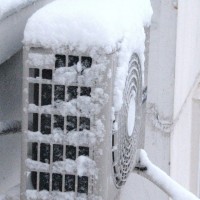 How to start air conditioning after winter: recommendations for caring for air conditioning after frost
How to start air conditioning after winter: recommendations for caring for air conditioning after frost 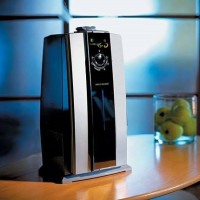 Air ionizer for apartments and houses: purpose and principle of operation + five popular models
Air ionizer for apartments and houses: purpose and principle of operation + five popular models  How to remove the air conditioner yourself without losing Freon: a detailed guide to dismantling the system
How to remove the air conditioner yourself without losing Freon: a detailed guide to dismantling the system 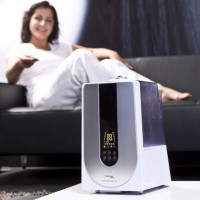 What is air ionization: the harm and benefits of using an ionizer + how to choose the right
What is air ionization: the harm and benefits of using an ionizer + how to choose the right  How much does it cost to connect gas to a private house: the price of organizing gas supply
How much does it cost to connect gas to a private house: the price of organizing gas supply  The best washing machines with dryer: model rating and customer tips
The best washing machines with dryer: model rating and customer tips  What is the color temperature of light and the nuances of choosing the temperature of the lamps to suit your needs
What is the color temperature of light and the nuances of choosing the temperature of the lamps to suit your needs  Replacement of a geyser in an apartment: replacement paperwork + basic norms and requirements
Replacement of a geyser in an apartment: replacement paperwork + basic norms and requirements